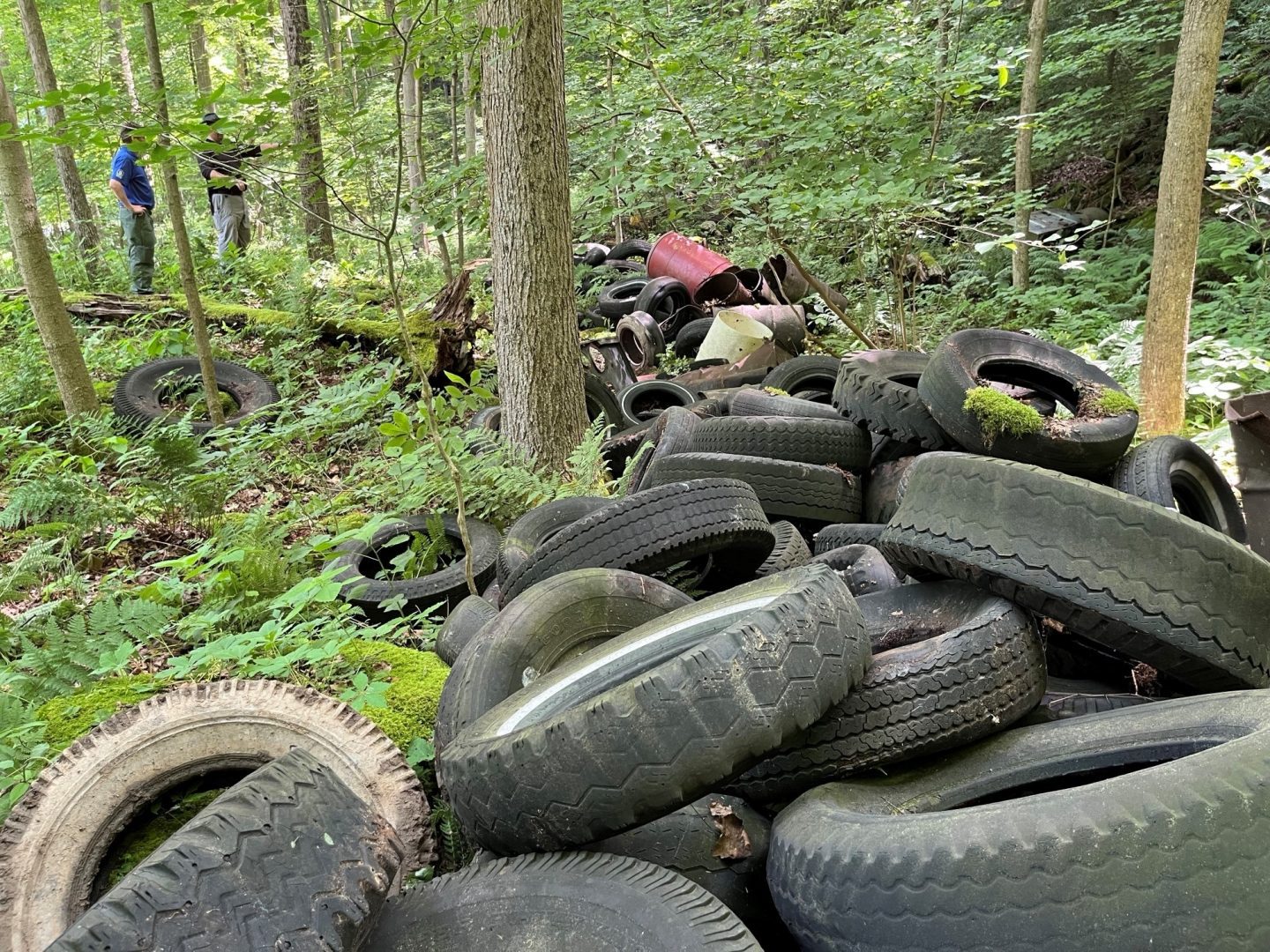As part of Ohio Governor Mike DeWine’s H2Ohio Rivers program, the Ohio Department of Natural Resources (ODNR) Division of Natural Areas and Preserves and River Rangers International cleaned up an illegal dump site along the banks of the Little Beaver Creek State Wild and National Scenic River.
The H2Ohio Rivers program was announced by Governor DeWine as an expansion of his statewide water quality initiative, H2Ohio.
“H2Ohio remains one of my top priorities,” said Governor DeWine. “Dedicating more resources to Ohio’s large rivers was a natural next step in the H2Ohio program to ensure our waterways are clean and enjoyable for all Ohioans. Part of the H2Ohio Rivers program is designed to take on these types of projects that clean up litter to restore our waterways and prevent contamination.”

Officials surveyed the illegal dump site ahead of clean up efforts.
River Rangers International is a non-profit organization whose mission is to keep waterways safe and clean in Ohio. The team along with ODNR, tackled a site where trash was illegally dumped near the creek many decades ago. The illegal dump site included litter such as household trash, steel drums, and more than 300 scrap tires.
“Our H2Ohio Rivers program works to identify these legacy dump sites then coordinates with local groups to clean it up,” said ODNR Director Mary Mertz. “By doing this we’re taking areas that have been a problem for generations and finding ways to reclaim the riverbanks and protect the rivers.”
The debris was located behind the Beaver Local High School football field and was on school district’s property. This specific dump site was discovered in a wooded area unknown to the general public and could not be seen from school grounds.
“We were not aware this dump existed until it was discovered by the Ohio Department of Natural Resources,” said Beaver Local Schools Superintendent Eric Lowe. “The district greatly appreciates the funding they secured to cover the project and the continuous communication throughout the project to ensure the area is restored to its natural state.”
The debris was removed by hand and then transported over 150 feet up a steep hill using a cable and winch system. This low impact method reduces the risk of disturbing the soil and vegetation of the area.
Cleaning up this illegal dump site using low-impact methods was key to the protection of the state endangered Hellbender Salamander population, which live in the Little Beaver Creek Wild and Scenic River. Hellbenders can only thrive in unpolluted rivers and streams with low sedimentation. Minimizing soil and forest disturbance also reduced the amount of soil erosion at the site, protecting the hellbenders. Furthermore, had the trash entered the river it could have caused harm to them or their habitat.
For more information about H2Ohio Rivers Program, the Scenic Rivers Program or the Ohio Department of Natural Resources and how to get involved please visit the H2Ohio Rivers Program website.
H2Ohio is Governor DeWine’s statewide water quality initiative designed to address complex issues impacting Ohio’s waters. Launched in 2019, H2Ohio uses a comprehensive approach guided by science and data to reduce algal blooms, stop pollution, and improve access to clean drinking water by supporting best farming practices, road salt runoff reduction, litter cleanup, dam removal, land conservation, and water infrastructure revitalization.

Recent Comments